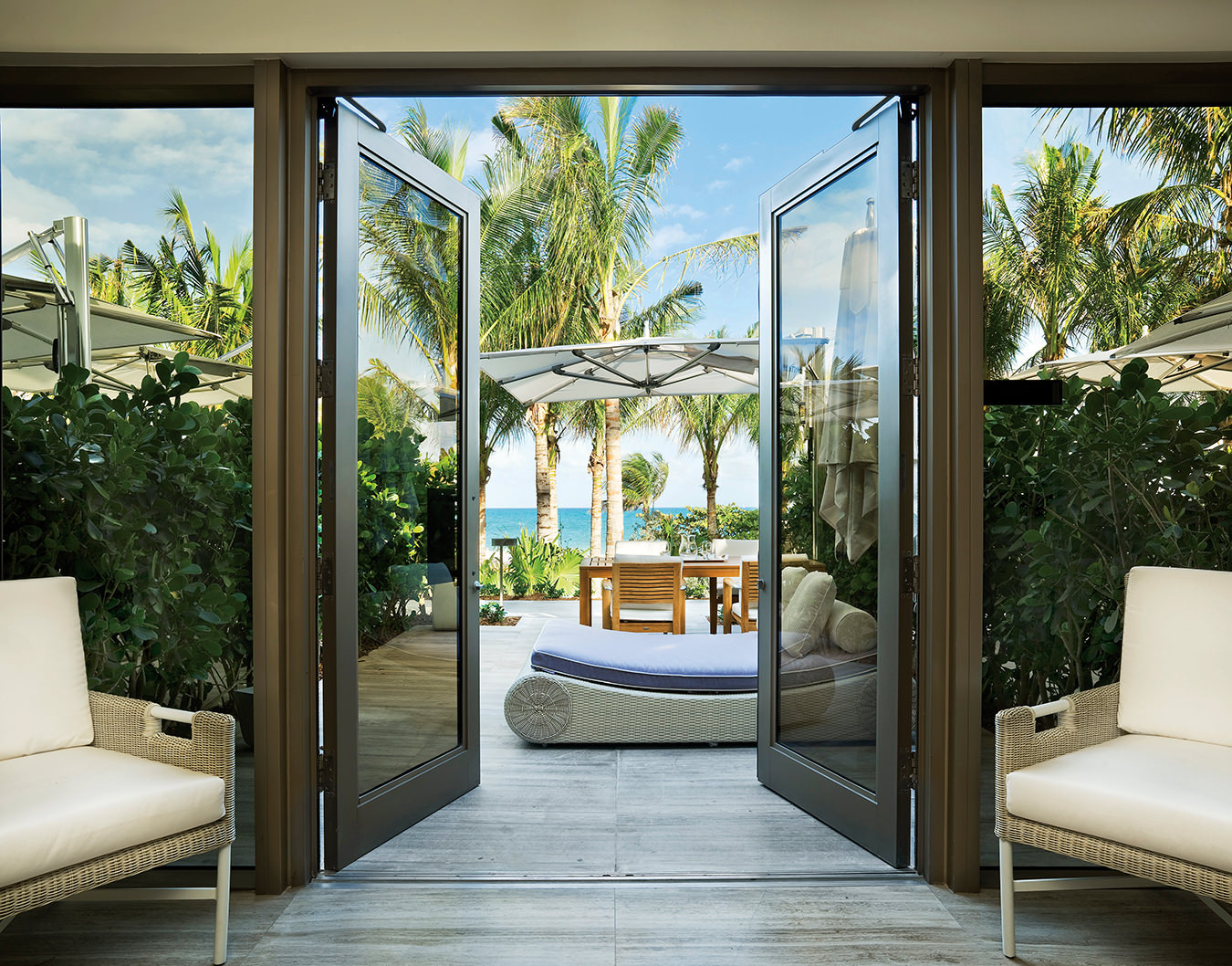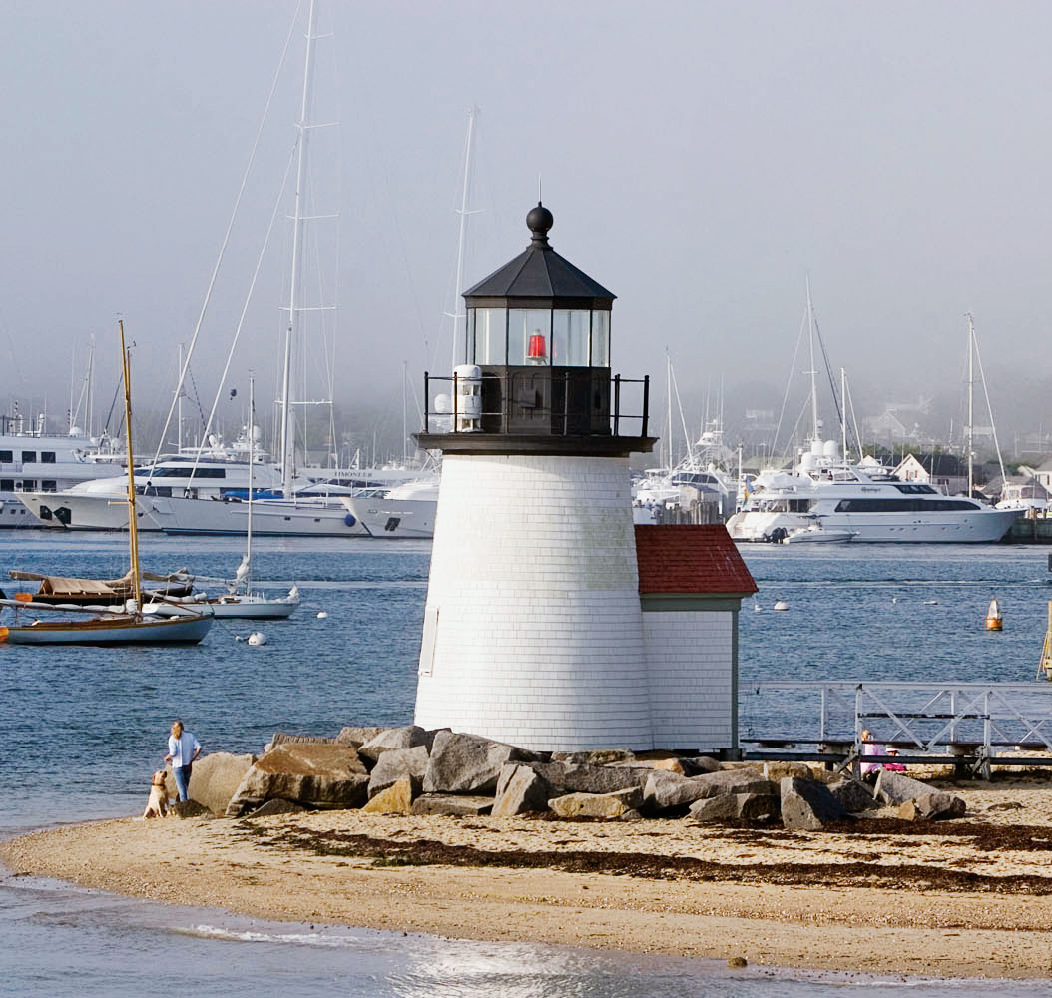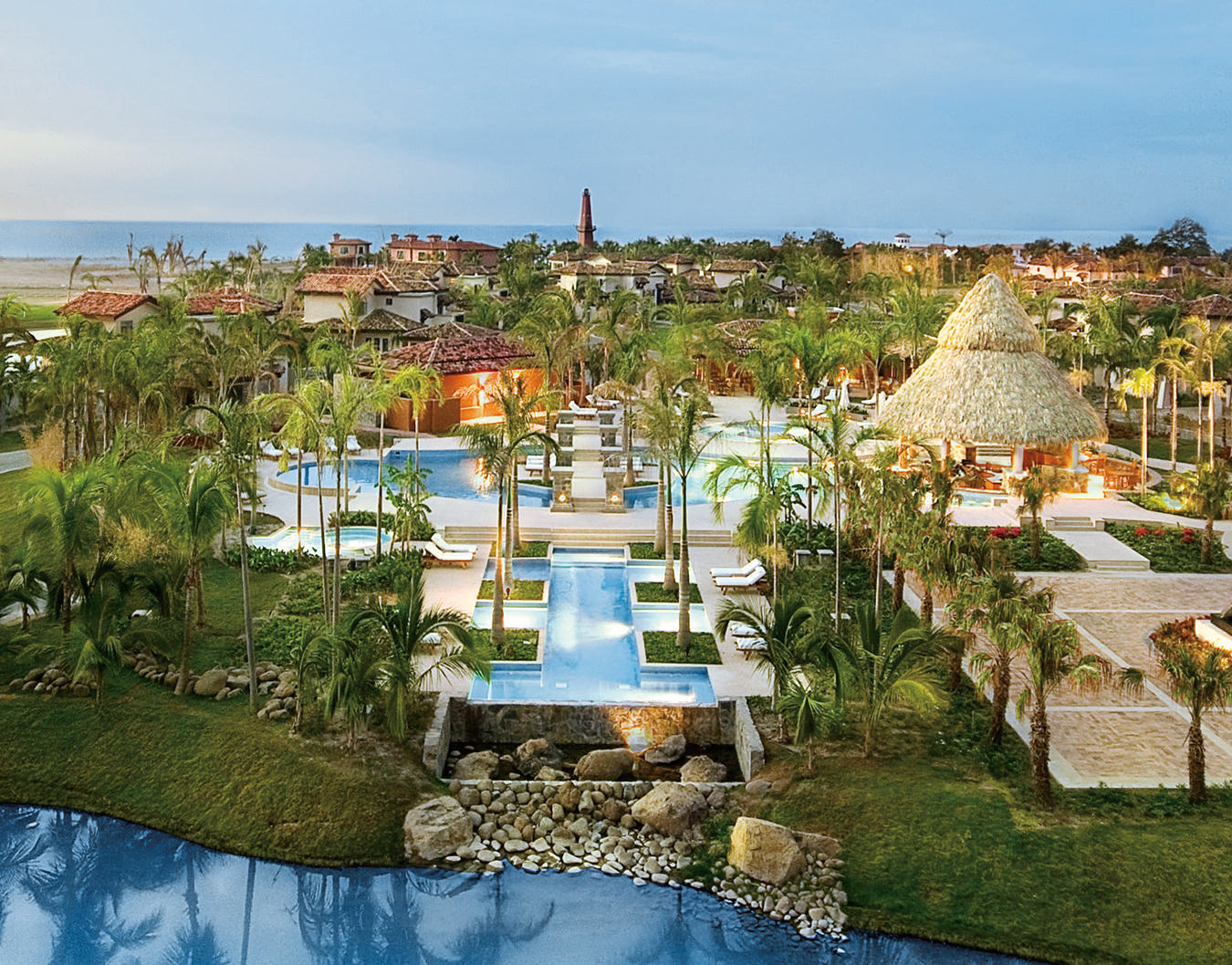The Silo Hotel in Cape Town is a Reimagined Grain Elevator
Going up?
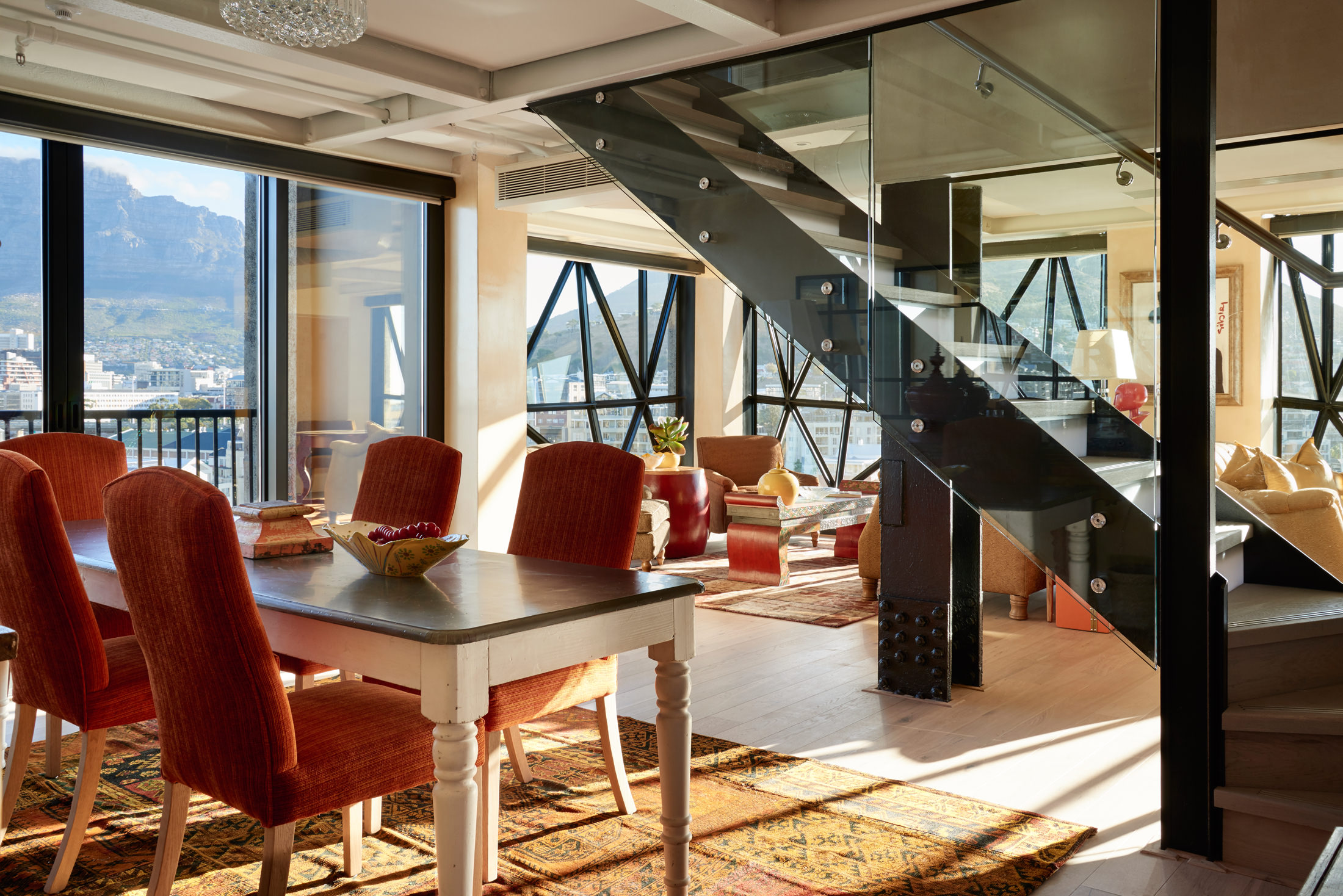
I’m standing in a vast, six-storey atrium, the heart of the building, surrounded by truncated tubes like so many veins and arteries protruding from it. Had I been in this spot 20 years ago, I would have been buried under 30,000 tons of grain. Thomas Heatherwick, the architect of this futuristic space, explains the concept. “This was a building made up of 118 compartments in the grain elevator and 42 giant concrete storage tubes,” he says of the 1920s grain silo building. “We wanted to keep as many of the original features as possible, but we needed to open up a heart in the building. So, we digitally enlarged a grain of corn and used that organic shape as a template to cut through the concrete structure.” This light-filled atrium—carved through resistant concrete tubes by means of diamond ropes, requiring each of the resulting irregular facets to be hand-polished—is the spectacular result.
Not many buildings are born to be instant icons. The one in question is located in Cape Town’s V&A Waterfront complex and houses the Silo Hotel, open since March 2017, and the Zeitz Museum of Contemporary Art Africa (MOCAA), which opened in September of the same year. With 6,000 square metres of exhibition space, Zeitz MOCAA is now the largest museum of African art in the world. The hotel, built in the old grain elevator portion of the complex, rises six storeys above the museum’s concrete curves.
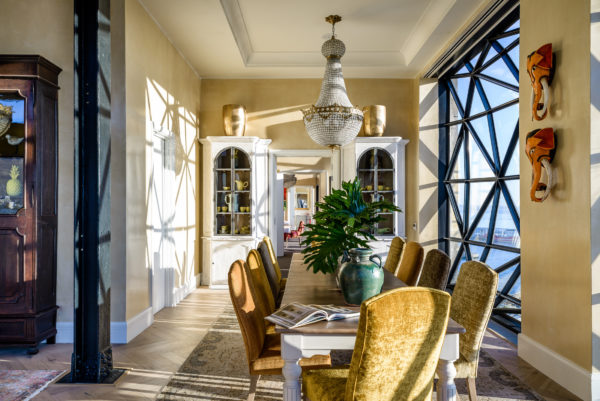
For Phil and Liz Biden, owners of the prestigious Royal Portfolio group of lodges in South Africa, this was the ideal location for their first Cape Town hotel. For the Silo Hotel, Heatherwick refashioned its exterior, joining the former grain elevator building to the storage silo itself while creating visual unity through the complex’s most talked-about feature: 104 convex windows, each containing 56 hand-cut panels of triangular glass set in a 3-D steel frame. Each one juts one metre from its wall mounting, reflecting multiple views of mountains, sea, and sky: an interplay of concrete, steel, and glass that lends new meaning to the notion of industrial chic.
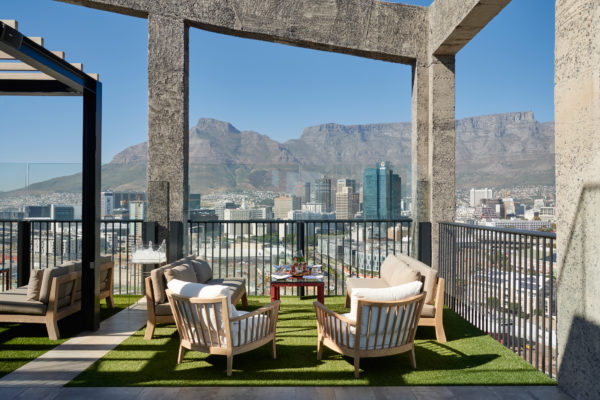
The transformed silo complex shines like a beacon on the waterfront, the beauty of Cape Town lying at its feet.
Step inside the hotel, however, and all similarities to its neighbour end. Where Zeitz MOCAA’s interior retains its industrial austerity, Liz Biden (who is responsible for the hotel’s interior design) has created a paean to the senses—a riot of jewel-box colours, textures, and cultural references, with objects and furniture collected on her travels. The ground floor lobby offers a taste of the quirkiness that awaits above: a lipstick-red feminist statement by artist Frances Goodman emerging from a wall, and a Haldane Martin contemporary chandelier suspended from the ceiling.
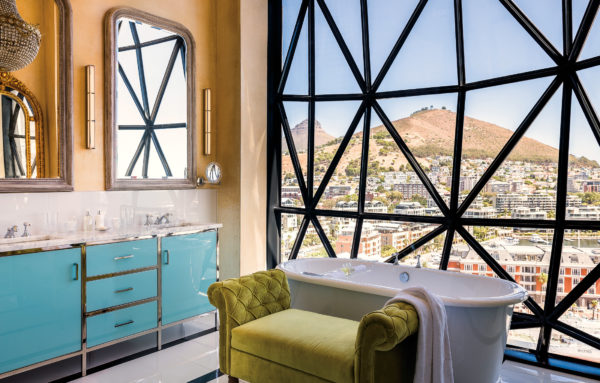
The challenge for Biden was to work within the constraints of the space, dictated by the two core elevator shafts and the “cubic geometry” of each floor. From the teal stools of soft Italian leather in the Willaston Bar (named after the first ship to carry grain from the silo to Europe in 1924) to the acid-yellow velvet sofas in the Royal Suite, her goal was “to pay tribute to luxury and comfort for our guests, balancing the stark and industrial style of the architecture with aspects of classic glamour and modern comfort.”
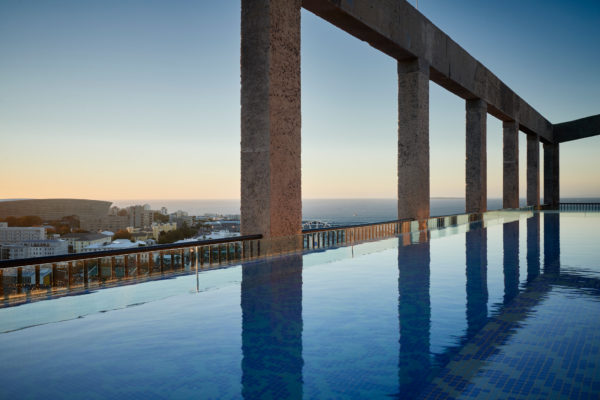
Where her creative stimuli were cosmopolitan, however, local manufacturers and craftspeople—such as the Potter’s Workshop, a philanthropic project designed to empower local communities—were commissioned to realize her vision. Inspiration was also taken from the building’s industrial heritage, such as the custom-made iron hoop chandeliers that run the length of the sixth floor. Elsewhere, brocades, shagreens, Persian carpets, contemporary rugs, European antiques, modern furniture, and 76 Egyptian handmade crystal chandeliers are all mixed together: each of the 28 rooms is unique in concept, colour palette, and design. They share only an exuberant eclecticism—and, naturally, Biden’s collection of hand-picked tableaux by contemporary African artists, both emerging and established, which are found throughout the hotel.
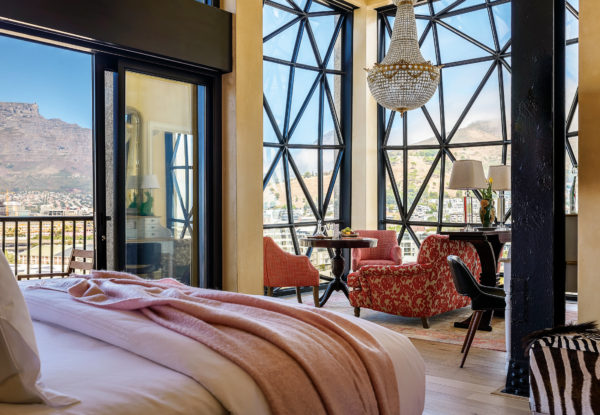
Yet despite the internal drama, the city itself is the star of this show. Whether from the Sky Terrace, swimming in the rooftop pool with 360-degree views, gazing at Table Mountain and the surrounding waterfront from the bar or the Grain Café, or luxuriating in the Royal Suites and bathrooms sporting tubs theatrically positioned before the giant pillowed windows, the views—from what was, until the late 1960s, the tallest building in sub-Saharan Africa—are the hotel’s most show-stopping asset. The transformed silo complex shines like a beacon on the waterfront, the beauty of Cape Town lying at its feet.

Photos provided by the Royal Portfolio.
Never miss a story, sign up for NUVO’s weekly newsletter, here.


